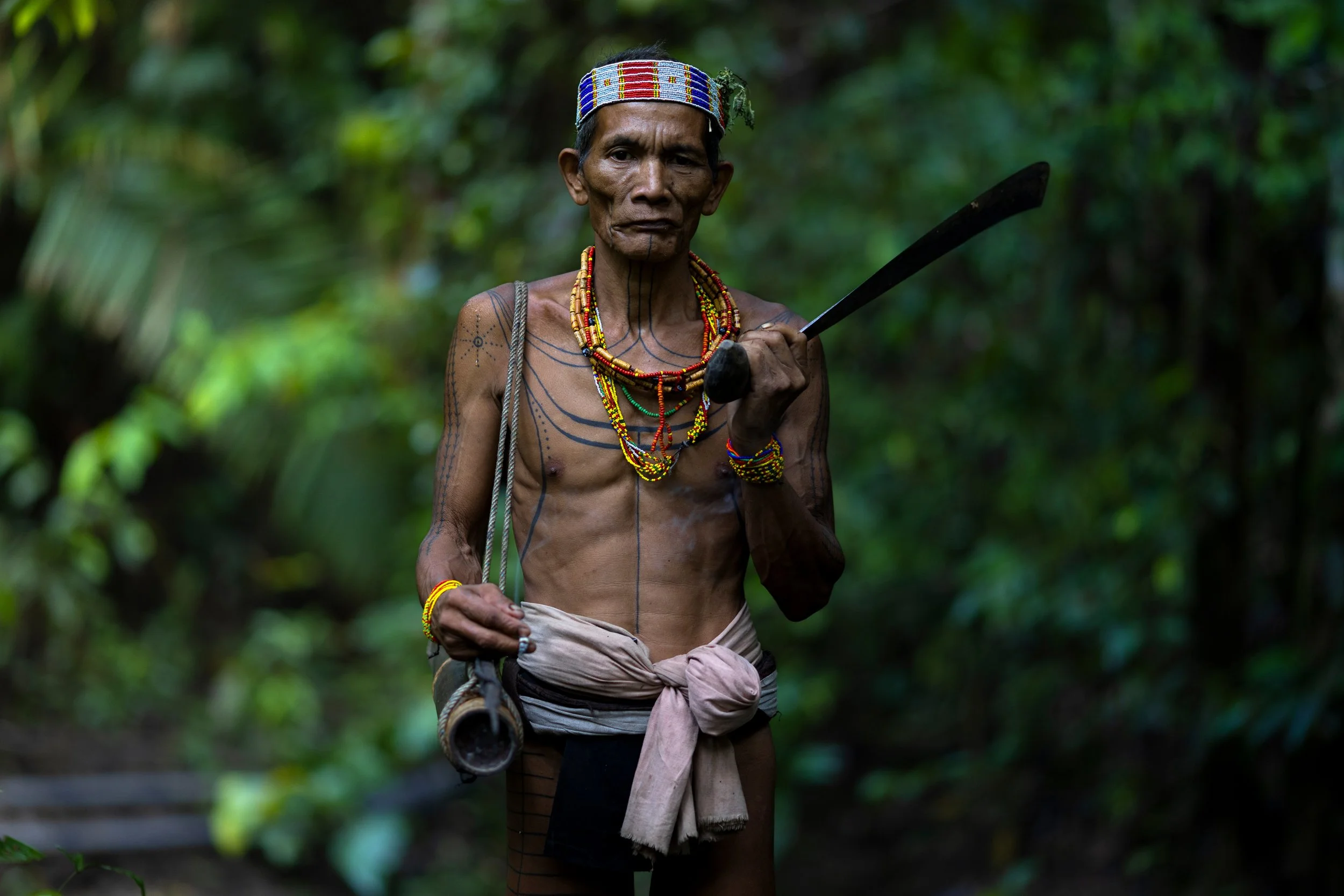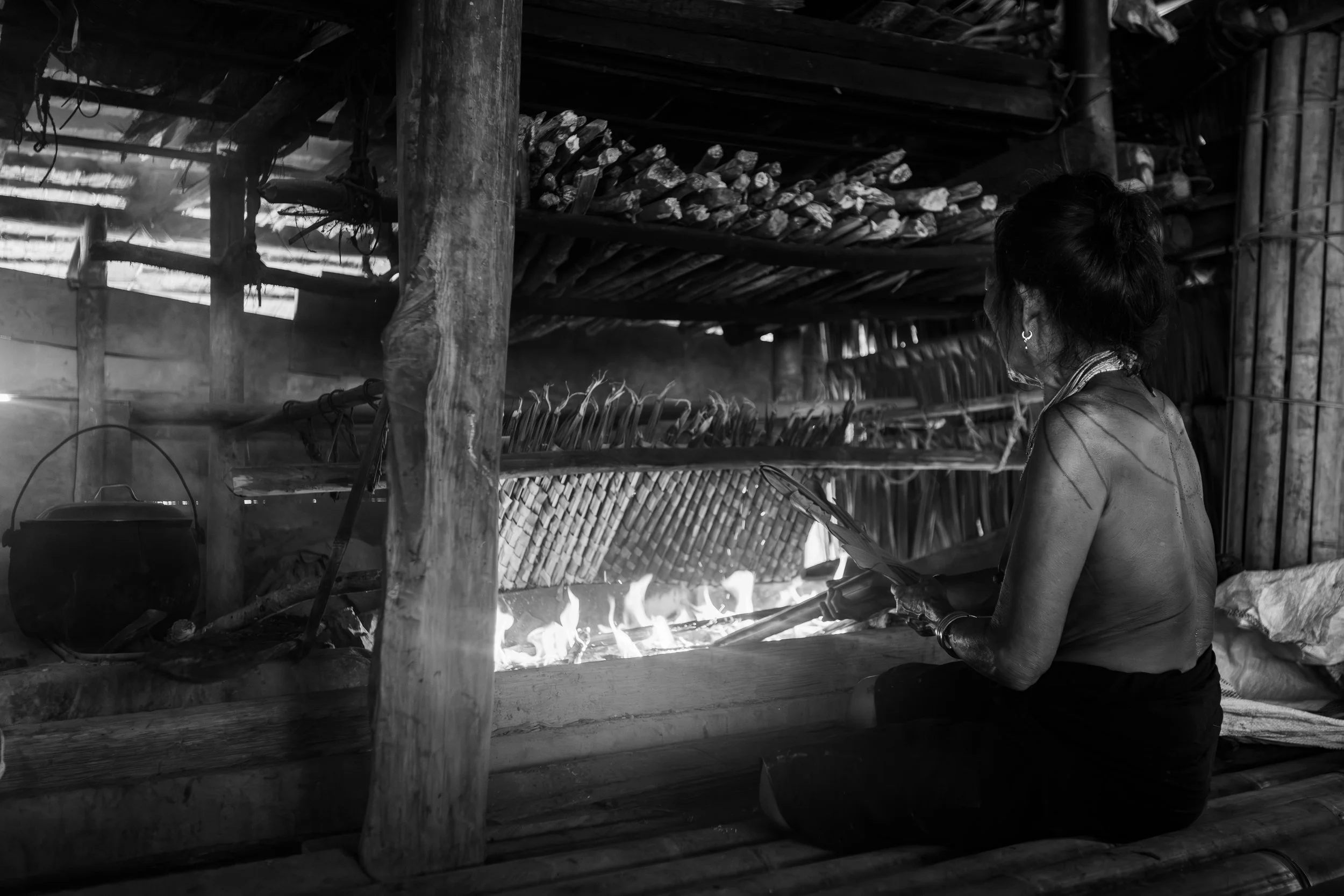Shamans
CANON EOS R5, f/2, 1/400, ISO 160 with CANON EF 135mm f/2 USM
The Mentawai tribes are the oldest indigenous populations of Indonesia.
I took this photo in October 2024 on Siberut Island, the last island still inhabited by tribes who live in the jungle while maintaining ancient traditions. The archipelago, also known for surfing, can be reached in about seven hours by ferry from Padang. Once at the port, you find the village of the Mentawai who left the jungle to live on the coast. Here the houses are simple and only basic services are present, but the connection with their roots is strong: symbols and architecture still recall those of the jungle. Today about one hundred tribes still live in the forest, reachable by going up the rivers with motor canoes.
The Mentawai who live in the jungle still follow their rituals. The shaman plays a central role: he heals illnesses, leads ceremonies, and guards the ties with the spirits of the forest. The men carry tattoos that tell their story and their relationship with nature. The women weave palm leaves and cook sago, their main food, obtained from the marrow of a palm that grows in the forest. Hunting wild boar and fishing remain daily activities, always accompanied by songs and ritual gestures.
Community life takes place around the uma, the large traditional houses built of wood and bamboo, raised from the ground with tall poles. Each uma hosts several families and becomes the center of social life: here meals, stories, dances, and ceremonies are shared. The uma represents the identity of the tribe and the bond with the ancestors. Even the symbols carved or painted on the beams have spiritual meaning, often linked to the forest and animals.
The tribe is built around the shaman and his sons. They, with their families, form the main core of the community. Women and children live and work together, while men hunt, fish, and pass down knowledge tied to the forest. The shaman is not only the spiritual leader but also the reference point for the most important decisions. Knowledge passes from father to son, as do the rituals and symbols that maintain balance with nature.
We left early in the morning with Xave and the shaman who was hosting us. We went into the jungle to visit one of his friends. With the rainy season approaching, the path had already turned into a long stretch of mud.
To face these conditions, the Mentawai family over time had cut down some trunks and placed them along the path. This way one can walk without sinking, but it only takes a moment to lose balance. Sometimes the trunks become real bridges. The shaman crosses them with ease, while I must be more careful, thinking above all of protecting the photographic equipment.
In the evening, on the way back, we went hunting. The Mentawai use bow and arrows dipped in poison obtained from a plant. The main prey are monkeys, especially black gibbons. White ones, instead, are not touched: they are considered protected by the spirits and cannot be eaten. After the hunt, the skulls of the animals are kept inside the house. Not as trophies, but as a sign of respect for the animal that gave its life to feed the community.





